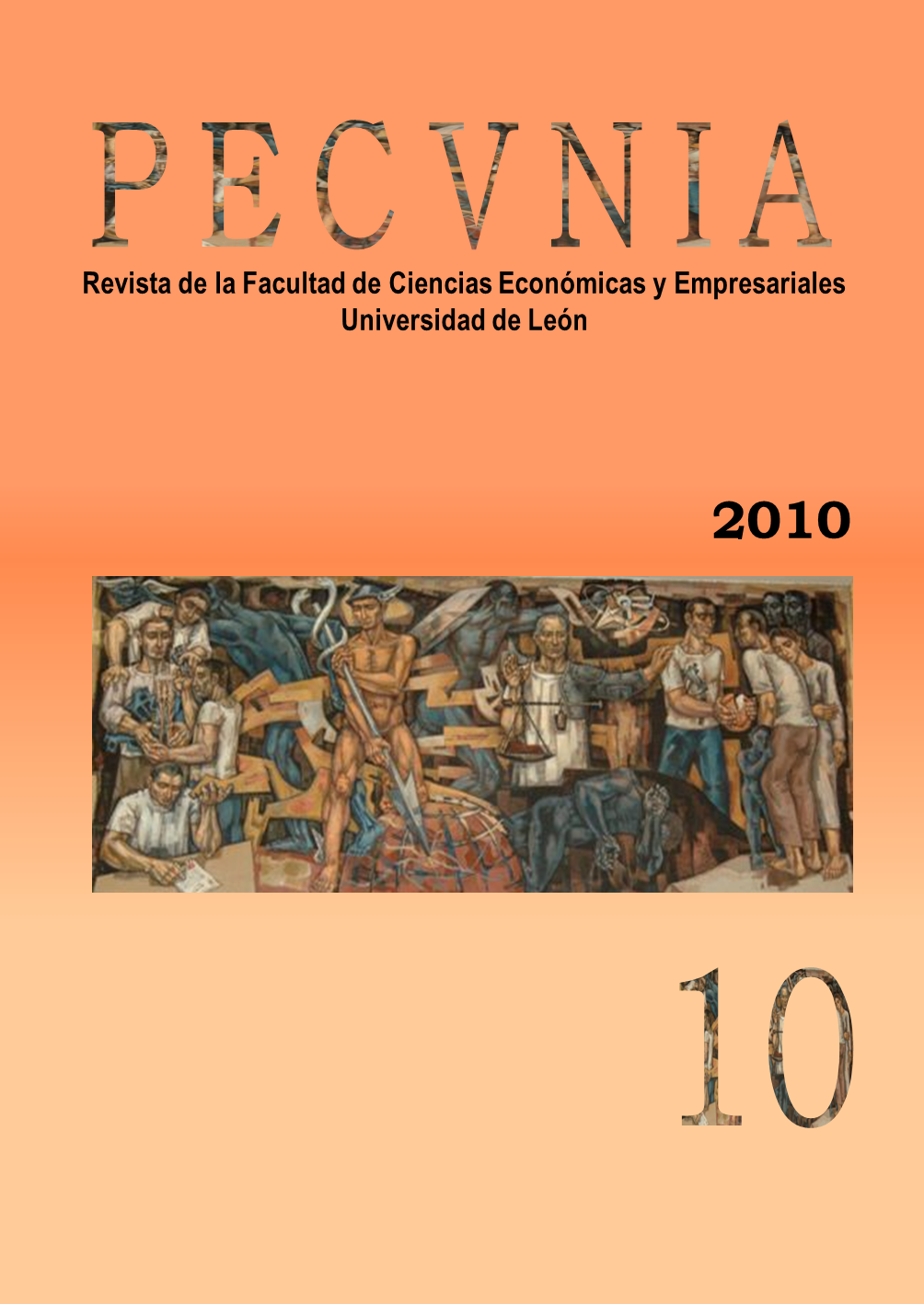¿Es realmente una herejía hablar de equidad, justicia y confianza en las organizaciones?
DOI:
https://doi.org/10.18002/pec.v0i10.639Palavras-chave:
Justicia organizativa, Confianza organizativa, Motivación, Productividad, Dirección de los recursos humanos, Organizational justice, Organizational confidence, Motivation, Productivity, Human resource managementResumo
El objetivo de este trabajo era revisar las aportaciones de la literatura acerca de cómo evitar la destrucción de confianza y cómo crearla dentro de una organización, considerando que la misma constituye un recurso organizativo clave, especialmente en las organizaciones con determinadas características. Para ello, se revisaron las aportaciones de la teoría de la equidad y la justicia organizativa. La revisión de la literatura nos ha permitido concluir que el recurso confianza es escaso, fácil de destruir y prácticamente imposible de reconstruir.The aim of this paper is to review the contributions of the literature about how to avoid the confidence destruction and how to create it inside an organization. We have considered that confidence is a key organizational resource, specially in certain kind of organizations. With this objective, we have reviewed the contributions of the theory of equity and the theory of organizational justice. The review of the literature has allowed us to conclude that the resource confidence is scanty, easily to destroy and practically impossibly to reconstruct.
Downloads
Referências
ADAMS, J.S. (1963) "Toward an Understanding of Inequity", Journal of Abnormal and Social Psychology, 67, 5, pp. 422-436.
AMBROSE, M.L. y C.T. KULIK (1999) "Old Friends, New Faces; Motivation Research in the 1990s", Journal of Management, 25, 3, pp. 231-292.
BING, M.N. (2001) "The Predictive and Interactive Effects of Equity Sensitivity in Teamwork-Oriented Organization", Journal of Organizational Behavior, 22, 3, pp. 271-290.
CARRELL, M.R. and J.E. DITTRICH (1978) "Equity Theory: The Recent Literature, Methodological Considerations, and New Directions", Academy of Management Review, 4, 2, pp. 202-210.
COHEN-CHARASH, Y. and P.E. SPECTOR (2001) "The Role of Justice in Organizations: A Meta-Analysis", Organizational Behavior and Human Decision Processes, 86, 2, pp. 278-321.
COLQUITT, J.A.; D.E. CONLON, M.J. WESSON, C. PORTER and K.Y. NG (2001) "Justice at the Millennium: A Meta-Analytic Review of 25 Years of Organizational Justice Research", Journal of Applied Psychology, 86, 3, pp. 425-445.
COSIER, R.A. and D.R. DALTON (1983) "Equity Theory and Time: A Reformulation", Academy of Management Review, 8, 2, pp. 311-319.
FEUILLE, P. and D.R. CHACHERE (1995) "Looking Fair on Being Fair: Remedial Voice Procedures in Nonunion Workplace", Journal of Management, 21, 1, pp. 27-42.
FOLGER, R. and J. GREENBERG (1985) "Procedural Justice: An Interpretative Analysis of Personnel Systems". K.M. ROWLAND and G.R. FERRIS (eds.) Research in Personnel and Human Resources Management. Greenwich, CT: JAI Press, vol. 3, pp. 141-183.
FROMM, E. (1971) Psicoanálisis de la Sociedad Contemporánea. México: Fondo de Cultura Económica.
FROMM, E. (2000) La Condición Humana Actual. Barcelona: Paidós.
FURNHAM, A. (1997) The Psychology of Behaviour at Work. Brighton: Taylor and Francis.
GHOSHAL, S. (2005) "Bad Management Theories are Destroying Good Management Practices", Academy of Management Learning & Education, 4, 1, pp. 75-91.
GILLILAND, S.W. (1993) "The Perceived Fairness of Selecting Systems: An Organizational Justice Perspective", Academy of Management Review, 18, 4, pp. 694-734.
GOODMAN, P.S. and A. FRIEDMAN (1971) "An Examination of Adams' Theory of Inequity", Administrative Science Quarterly, 16, 3, pp. 271-288.
GREENBERG, J. (1990) "Organizational Justice: Yesterday, Today, and Tomorrow", Journal of Management, 16, 2, pp. 399-432.
JOHNSON-GEORGE, C. and W.C. SWAP (1982) "Measurement of Specific Interpersonal Trust: Construction and Validation of a Scale to Assess Trust in a Specific Other", Journal of Personality and Social Psychology, 43, 6, pp. 1306-1317.
KRAMER, R. (1999) "Trust and Distrust in Organizations: Emerging Perspectives, Enduring Questions", Annual Review of Psychology, 50, 1, pp. 569-598.
LANDY, F. and J. CONTE (2004) Work in the 21st Century: An Introduction to Industrial and Organizational Psychology. New York: McGraw Hill.
MASTERSON, S.S. (2001) "A Trickle-Down Model of Organizational Justice: Relating Employees' and Customer's Perceptions of an Reactions to Fairness", Journal of Applied Psychology, 86, 4, pp. 594-604.
PRITCHARD, R.; M. DUNNETTE and D. JORGENSEN (1972) "Effects of Perceptions of Equity and Inequity on Worker Performance and Satisfaction", Journal of Applied Psychology, 57, 1, pp. 75-94.
RAWLS, J. (1978) Teoría de la Justicia. Madrid: Fondo de Cultura Económica.
ROBBINS, S.P. and M. COULTER (1996) Management, 5th edition. Englewood Cliffs: Prentice-Hall .
SKARLICKI, D.P. and R. FOLGER (1997) "Retaliation in the Workplace: The Role of Distributive, Procedural and Interactional Justice", Journal of Applied Psychology, 82, 3, pp. 434-443.
TUGENDHAT, E.; C. LÓPEZ y A.M. VICUÑA (2001) El Libro de Manuel y Camila. Diálogos sobre Ética. Barcelona: Gedisa.
WAGNER, J.A. III and J.R. HOLLENBECK (1998) Organizational Behavior: Securing Competitive Advantage, 3rd edition. Upper Saddle River: Prentice Hall.
WICKS, A.C.; S.L. BERMAN and T.M. JONES (1999) "The Structure of Optimal Trust: Moral and Strategic Implications", Academy of Management Review, 24, 1, pp. 99-116.
Downloads
Publicado
Como Citar
Edição
Seção
Licença
Copyright (c) 2010 Esteban Fernández Sánchez, Beatriz Junquera Cimadevilla

Este trabalho está licenciado sob uma licença Creative Commons Attribution-NonCommercial-ShareAlike 4.0 International License.
Los autores que publican en esta revista están de acuerdo con los siguientes términos:- Los autores ceden de forma no exclusiva los derechos de explotación (reproducción, distribución, comunicación pública, transformación) a la Universidad de León, por lo que pueden establecer, por separado, acuerdos adicionales para la distribución no exclusiva de la versión de la obra publicada en la revista (por ejemplo, alojarlo en un repositorio institucional o publicarlo en un libro), con un reconocimiento de su publicación inicial en esta revista.
- Este trabajo se encuentra bajo la Creative Commons Attribution-NonCommercial-ShareAlike 4.0 International License. Puede consultarse desde aquí la versión informativa y el texto legal de la licencia.
- Se permite y se anima a los autores a difundir electrónicamente las versiones pre-print (versión antes de ser evaluada) y/o post-print (versión evaluada y aceptada para su publicación) de sus obras antes de su publicación, ya que favorece su circulación y difusión más temprana y con ello un posible aumento en su citación y alcance entre la comunidad académica.












